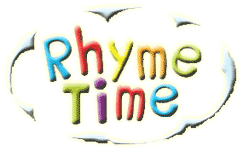Bob Leslie is an Independent Scottish Songwriter, Singer, and Recording Artist

……………………………………………………………..
The Dowie Dens of Yarrow …
The Scots Border Ballad The Dowie Dens of Yarrow has been around, in one form or another, for a long time and may be based on a real incident that took place by the Yarrow river near Selkirk in the Scottish Borders.
William Hamilton of Bangour wrote a poem called The Braes of Yarrow based “in imitation of an old Scottish ballad on a similar subject” which appears in a collection of his work published in Edinburgh in 1724.
The plot is similar to that of the song we shall look at, and employs much of the same vocabulary, but is in the form of a dialogue in which a lady refuses to marry the knight who killed her love – who seems also to have been a knight.
If it were “an old Scottish ballad” in 1724, it is obviously of some antiquity.
Sir Walter Scott was of the opinion that it related to the murder, over 100 years before, of an ancestor of his, Sir John Scott. Sir John was killed in Ettrick Forest – through which The Yarrow flows before joining the River Ettrick.
……………………………………………………………..

The song we now know as The Dowie Dens of Yarrow amends the plot for popular appeal by making the male protagonist a young plough-boy who is loved by a lady of high rank.
He is murdered by her other suitors and her brothers because of his low birth and because the lady loves him and not them.
She dreams she’s pulling heather out of the ground while it’s still green and hasn’t had a chance to reach maturity. After telling her father of the dream, she interprets it as an ill omen, and goes to search for her lover.
Finding his body by the river, she wraps her hair around his waist and carries him home – no weakling she! 
To be fair, other variants have her tie his long hair to her horse to drag him home, but modern performers seem to have decided that a big strong lass carrying her lover’s body has more audience appeal!
The lady confronts her father. She says that he may marry off her seven brothers – implying that she will never marry – but that the one most worthy of marriage was her plough-boy lover. She then accuses him of organising the murder. Not exactly a happy family!
……………………………………………………………..
 The Dowie Dens of Yarrow travelled with the Scottish immigrants to the New World, becoming, variously, The Dewy Dens of Yarrow in Canada, the Ozark Mountains, the Catskills, and Missouri, or, further west, the somewhat puzzling Derry Dems of Arrow wherein the protagonists are cowboys.
The Dowie Dens of Yarrow travelled with the Scottish immigrants to the New World, becoming, variously, The Dewy Dens of Yarrow in Canada, the Ozark Mountains, the Catskills, and Missouri, or, further west, the somewhat puzzling Derry Dems of Arrow wherein the protagonists are cowboys.
……………………………………………………………..
So who’s singing it? …
The version we’re going to look at is by Shelagh McDonald a Scottish folk singer and  songwriter who released two acclaimed albums before effectively disappearing in 1971.
songwriter who released two acclaimed albums before effectively disappearing in 1971.
The mystery was solved when she saw an article about herself in a newspaper, contacted them, and told them she’d backed out of public life following a traumatic LSD trip, and had since married and was living quietly.
Since then, she’s been making a very gradual comeback – which is good for the folk world as, vocally, she was up there with Sandy Denny as an outstanding female vocalist – in fact, on her two albums she was backed by members of Fairport, Fotheringay, and Pentangle – which should show you how highly she was regarded.
As you might guess from all that, this version is a typical 60s/70s folk-rock take on the song. It’s extremely atmospheric, and the arrangement really backs up the essential drama of the lyrics.
……………………………………………………………..
Lend an ear and an eye …
Shelagh has lightly Anglicised the lyric – presumably to make it more comprehensible to her English fans – but there are a few older words in it that even modern Scots might not get, so here’s a brief glossary:
- dowie – dismal, dark
- den – valley
- marrow – equal, balance
- doubt – fear
- howm – a flat area running alongside a river
The Dowie Dens of Yarrow by Shelagh McDonald, from Stargazer (c) 1971

……………………………………………………………..
Sometimes stress is GOOD for you …
The song has a regular stress pattern in the lyrics, as follows:
- Line 1 – 4 stressed syllables
- Line 2 – 3 stressed
- Line 3 – 4 stressed syllables
- Line 4 – 3 stressed syllables
“There was a lady in the north
I ne’er did see her mar-row
She was courted by nine gent-le-men
And a plou-ough-boy fae Yar-row”
This stress pattern is the model for every verse
……………………………………………………………..
Metre matters …

Rhythmically, the stresses line up as lots of dah-DUMs (iambs), the reverse form DUM-dahs (trochees), and dah-dah-DUMs (anapests), with an occasional reverse form of that – DUM-dah-dah – known as a dactyl
- Line 1 has 4 iambs
- Line 2 basically has 3 trochees, but some verses insert an extra an unstressed “dah” at the start.
The ones beginning “Down” have a dactyl in place of the first trochee, ie DUM-dah-dah DUM-dah DUM-dah - Line 3 sometimes has 4 iambs, and sometimes an anapest and 3 iambs
- Line 4 basically has 3 trochees but squeezes in one or two unstressed syllables at the start of each line.
……………………………………………………………..
The basic rhythm underpinning the verses is 
dah-DUM dah-DUM dah-DUM dah-DUM
DUM-dah DUM-dah DUM-dah
dah-dah-DUM dah-DUM dah-DUM dah-DUM
DUM-dah DUM-dah DUM-dah
or
4 iambs, 3 trochees, one anapest & 3 iambs, 3 trochees
but, as noted above, there are small variations from verse to verse.
……………………………………………………………..
I’ve said before (and I’m saying it again!), strict adherence to a metric pattern isn’t essential – but getting the stresses in the right place is!
However, the closer you can get to a regular metric pattern, the tighter the lyric will sound.
Dowie Dens of Yarrow actually gets closer than most to a tight metric structure – so, bonus points to the writer (probably that fellow A. Non, or his pirate pal Trad Arr)!
……………………………………………………………..
Rhyme time …
The rhyming model established in the 1st verse is followed for the other verses with one exception.
Every second line carries an end-rhyme which is either the word “Yarrow” or a full or half-rhyme for that word: “marrow” “sorrow” “yellow” “tomorrow”
This underlines the feeling of inevitable tragedy in the song, and also makes it very memorable.
The exception is in verse 5 when the murder actually takes place. That action is underlined by changing the rhymes to “fairly” and “foully” and also by the alliterative repetition of the word “fought”. These tactics place a special emphasis on that verse and make it jump out as a dramatic focal point.
……………………………………………………………..
Hook ’em in! …
 The really old folk ballads generally concentrate on the story, and any choruses or repeated lines tend to be of the nonsensical “Fa la la down dilly” or “All along, down along lee” variety – which were more to give the audience something to sing while the singer/minstrel was trying to remember – or invent from whole cloth – the next actual line of the song.
The really old folk ballads generally concentrate on the story, and any choruses or repeated lines tend to be of the nonsensical “Fa la la down dilly” or “All along, down along lee” variety – which were more to give the audience something to sing while the singer/minstrel was trying to remember – or invent from whole cloth – the next actual line of the song.
The Dowie Dens of Yarrow is slightly unusual in that it so many verses contain the word “Yarrow” that it is clearly intended as the hook, and the alliterative pattern “dowie dens of Yarrow” in verse 6 provides a readily remembered title for the song.
……………………………………………………………..
Musical pie à la mode …
The song, all the way through, follows the scale
A B C D E F G A
and all the chords are constructed using those notes.
The smartypants among you, who have been following this blog for a while, will instantly cry, “Why, that’s A Aeolian! A most minor mode!”
And so it is. A Aeolian or A natural minor as it is also known, contains neither the G# note, nor the E major chord we associate with the normal A minor key, so we’re in modal territory.
It’s got an even more moody and minorish tonality to play with compared to A minor so is very well suited to the sad and dramatic tone of The Dowie Dens of Yarrow.
In actual fact, the song is in Bb Aeolian but that’s pretty hard on the fingers (on guitar anyway) so I’ve written it as A Aeolian with a capo on the first fret.
Given the date of the recording, there’s a chance it was actually played in A Aeolian and the engineer speeded the tape up a semitone to tighten up the arrangement – such things were not unknown way back in 1971!
……………………………………………………………..
How does it stand up? …
 It’s a very solid song that follows clear patterns all the way through – thus making it easier to learn and increasing its memorability.
It’s a very solid song that follows clear patterns all the way through – thus making it easier to learn and increasing its memorability.
Structurally, apart from some very minor variations, the song displays the following audience-grabbing features:
- Stress pattern in the lyrics repeating in each verse
- Repeated metric pattern
- Repeated rhyme pattern
- Main key of A Aeolian complements the gloomy, moody feel of the lyric
- Memorable hook which is included in the title for even more brand recognition
- And, of course, there’s a MURDER! Who doesn’t like a good murder, eh?
……………………………………………………………..
Next week, we’ll look at a song, written in a traditional style,
by a modern songwriter – who isn’t me!
……………………………………………………………..
Click for NEXT page!
……………………………………………………………..
Click here to return to Home page
Bob Leslie – Scottish – Traditional – Songwriter





